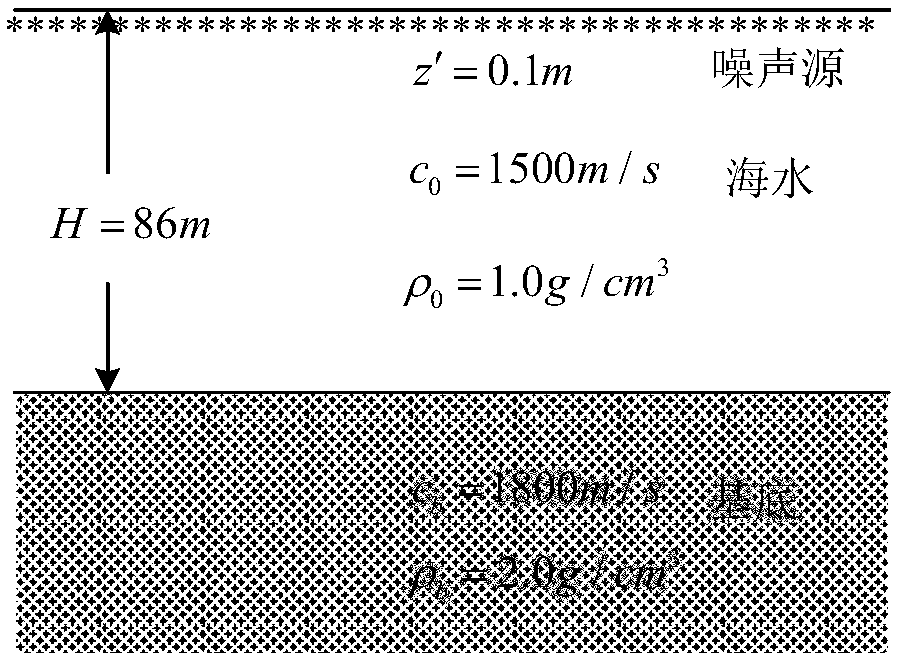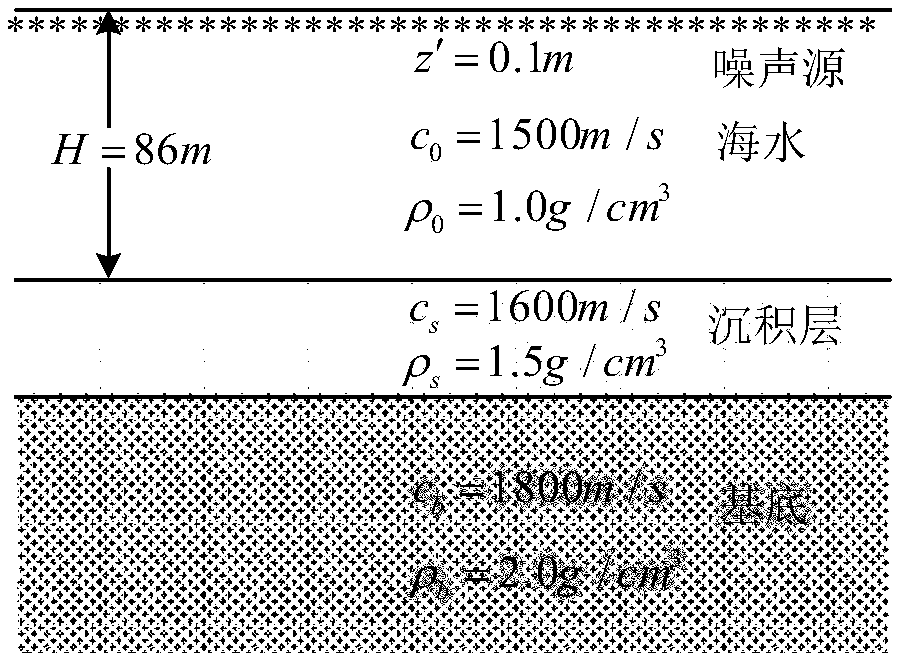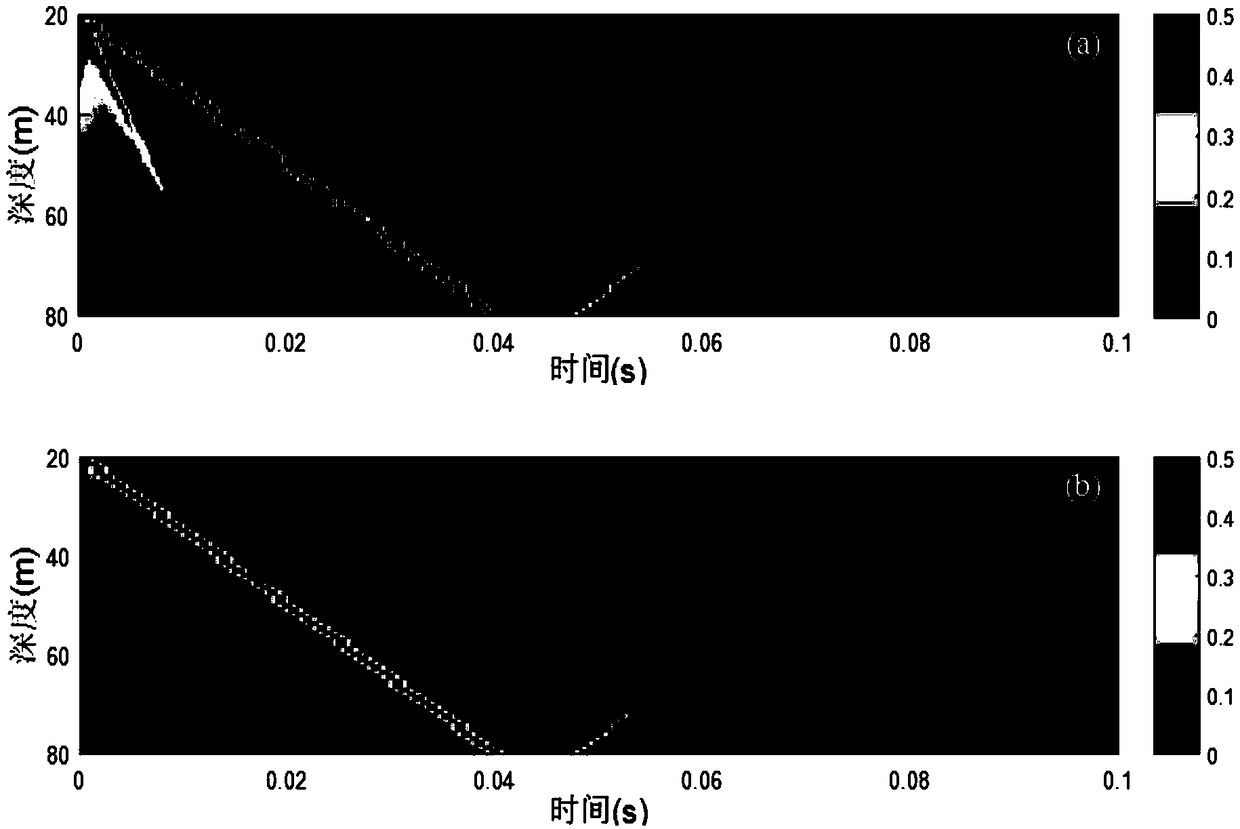Seabed sound speed multi-step inverting method based on dual-vector hydrophone
A hydrophone, dual vector technology, applied in the measurement of propagation velocity, measurement of ultrasonic/sonic/infrasonic waves, instruments and other directions, can solve the problem of loss of passive inversion, and achieve strong engineering application value, simple experimental operation, and low experimental cost. Effect
- Summary
- Abstract
- Description
- Claims
- Application Information
AI Technical Summary
Problems solved by technology
Method used
Image
Examples
Embodiment Construction
[0047] Now in conjunction with embodiment, accompanying drawing, the present invention will be further described:
[0048] First use the vertical vibration velocity signal of the noise field to reconstruct the Green's function of the sound field, extract the multi-path arrival structure between two vertically separated hydrophones, and use different multi-path arrival structures to obtain the layered structure of the seabed sediment layer and the thickness of each layer of sediment layer relationship with the speed of sound. Then select the corresponding seabed model for inversion, and finally use the coherent structure of the vertical vibration velocity signal in the noise field to invert the seabed sound velocity. The present invention is mainly introduced from the following aspects: firstly, a sound field Green's function extraction method based on the vertical vibration velocity signal of the noise field is established, and it is proved by theoretical simulation that the v...
PUM
 Login to View More
Login to View More Abstract
Description
Claims
Application Information
 Login to View More
Login to View More - R&D
- Intellectual Property
- Life Sciences
- Materials
- Tech Scout
- Unparalleled Data Quality
- Higher Quality Content
- 60% Fewer Hallucinations
Browse by: Latest US Patents, China's latest patents, Technical Efficacy Thesaurus, Application Domain, Technology Topic, Popular Technical Reports.
© 2025 PatSnap. All rights reserved.Legal|Privacy policy|Modern Slavery Act Transparency Statement|Sitemap|About US| Contact US: help@patsnap.com



